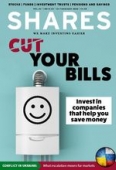Archived article
Please note that tax, investment, pension and ISA rules can change and the information and any views contained in this article may now be inaccurate.
The inflation signals keep lighting up

February’s flash PMI (purchasing manager index) data (21 Feb) showed the UK economy rebounding strongly from the recent Omicron related lull in activity with the services component registering an eight-month high of 61.8. Readings over 50 signal an expanding economy.
Cost pressures remained elevated across the economy driven by tight supply chains and lengthened delivery times. Input prices increased at the fastest pace since November, before Omicron, representing the second quickest acceleration since 1998.
The latest data will heap more pressure on the Bank of England policy making committee when it meets on 17 March to decide whether to raise interest rates yet again following the first two back-to-back rate increases since 2004.
A strong rebound in January retail sales added more fuel to the inflation fire when the ONS (Office for National Statistics) reported an increase in volumes of almost 2%, double the forecast by economists in a Reuters poll.
Department store and household goods sales were particularly robust showing a 7% increase compared with the prior month with furniture and electrical goods the standout components, rising 16% and 17% respectively.
In a mirror image of lockdown trends, food sales volumes dropped 2.3%, falling below their pre-pandemic levels. Overall retail sales are up 3.6% compared with before the onset of the pandemic.
Share prices of some of the largest branded consumer goods companies such as Unilever (ULVR), Reckitt (RKT), Nestle and Heineken have underperformed of late on fears that consumers may be forced to trade down to cheaper products as their wallets get squeezed by rising fuel and energy prices.
The thinking is that the branded companies will need to spend more money on marketing to maintain their share of consumer wallets and/or take on some of the pain from higher input costs to avoid higher in-store prices depressing demand. Both these factors look set to hit profitability.
Meanwhile across the Atlantic, better than expected retail sales have increased expectations that the US Federal Reserve will need to raise the policy rate by more than the quarter percentage point previously anticipated when the governors of the central bank meet on 15 March to discuss the economy and reveal the bank’s latest financial projections.
New York Federal Reserve Bank president, John Williams recently said inflation had ridden too high and he acknowledged that monetary policy had a role to play in getting it back under control.
Williams signalled that supply chain pressures and a hot labour market made it likely the Fed would consider increasing its target range for interest rates.
James Bullard, president of the St Louis Fed has called for the Fed Funds rate to be 1% higher that the current 0.15% level by July and voiced his support for a 0.5% increase at the March meeting.
Important information:
These articles are provided by Shares magazine which is published by AJ Bell Media, a part of AJ Bell. Shares is not written by AJ Bell.
Shares is provided for your general information and use and is not a personal recommendation to invest. It is not intended to be relied upon by you in making or not making any investment decisions. The investments referred to in these articles will not be suitable for all investors. If in doubt please seek appropriate independent financial advice.
Investors acting on the information in these articles do so at their own risk and AJ Bell Media and its staff do not accept liability for losses suffered by investors as a result of their investment decisions.
Issue contents
Ask Tom
Editor's View
Feature
Great Ideas
News
- The firms which might be next after latest UK takeovers
- Banks fail to inspire despite upgrades and buybacks
- The market impact of Russia’s Ukrainian incursion
- Pubs and restaurants could see another bumper run
- The inflation signals keep lighting up
- Introducing our new column on US markets: Wall Street Week

 magazine
magazine








